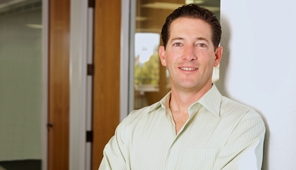 Venture capitalists have seemingly gone bananas over food startups. According to VentureSource, in the last 14 months, 15 companies that deliver restaurant meals have been funded; meanwhile another 11 startups that sell general food products were funded last year – an industry record.
Venture capitalists have seemingly gone bananas over food startups. According to VentureSource, in the last 14 months, 15 companies that deliver restaurant meals have been funded; meanwhile another 11 startups that sell general food products were funded last year – an industry record.
Are investors overdoing it? Perhaps, though a peek into the business of NatureBox, a two-year-old, San Carlos, Ca.-based snack-delivery company that has raised $28 million to date, highlights the opportunity they’re chasing. Earlier this week, I spoke with CEO Gautam Gupta, a former investor with General Catalyst (which is among NatureBox’s backers), about his 60-person company. Our chat has been edited for length.
How fast is NatureBox growing?
I started the company with a friend of mine from college two-and-a-half years ago. That first year, we shipped 50,000 [boxes of snacks to customers]. Last year, we shipped a million and we’re on track to triple that this year.
Who, and where, are your customers?
We have customers in all 50 states. We do skew toward a female audience. The largest segment is moms looking to find healthier options for their family and school lunches. Half of our customers are on the coasts; the other 50 percent are in the Midwest, where people don’t have access to Whole Foods or Trader Joe’s.
How much are they paying for their Naturebox deliveries?
We have three different offerings, so $20, $30, or $50 a month [based on how much you’re ordering]. You can choose the items yourself from 120 different options in our catalog, or we can select them for you.
From where are you shipping the products?
We work directly with almond and fruit growers across the country to source the ingredients. We then have a network of contract manufacturers who work on the product across the country and who send the product to our two fulfillment centers in California. We’re also about to launch an Indiana-based fulfillment center, which is a big undertaking for us and will enable us to get our boxes to our East Coast and Midwest customers much faster.
What convinced you that this was a big opportunity?
The traditional model, through retail stores, really involves a fight for shelf space, with [food companies] having to develop products based on the retail calendar. What we’ve done is take a product development cycle that’s one to three years and condensed it to the point where an idea can be made into a product that’s in customers’ hands in two or three months. More, as soon as it reaches that customer, we’re getting feedback about what they like and don’t like to eat and what makes products more or less successful — data that drives the business [forward].
What have you learned about your customers so far?
We’ve learned how important the aspect of familiarity is to a new product. We have four or five flavors of wheat fig bars available to customers on our site, for example, because the taste is very similar to Fig Newton [cookies], though our products are made of whole grain and without any fructose syrup.
You spent eight years working at General Catalyst. Do you think VCs are beginning to plug too much money into me-too food startups?
From an investors’ standpoint, the industry we’re going after is a trillion dollar market. It’s one of the last industries to be disrupted by the Internet.
Will you be back in the market in 2014?
We’ve had a lot of folks reaching out to us and have a lot of options. We’re kind of heads down, building the business, but if it continues to grow and we’re in a good position, it’s [possible].
Before you go, which is better, life as a VC or as an entrepreneur?
I started with General Catalyst when I was in college, and it was the only real job I had before starting NatureBox . . . I’ve now learned that building a company is so much of a team sport, versus investing, which is more about being an individual contributor. I’m definitely learning a lot, but I also really love the aspect of being able to do something and see the impact of that and really playing in the game. This job is a lot more fun.
Sign up for our morning missive, StrictlyVC, featuring all the venture-related news you need to start you day.
 Imagine a young startup where two of three founders are pushed out the door. Imagine that this same startup parts ways with its COO, its SVP of Finance, its VP of Guest Experience, its VP of Engineering, its VP of Marketing and roughly half its other full-time employees, all within a period of months. Not last, imagine that the remaining cofounder, who is 20, has never before held a full-time job.
Imagine a young startup where two of three founders are pushed out the door. Imagine that this same startup parts ways with its COO, its SVP of Finance, its VP of Guest Experience, its VP of Engineering, its VP of Marketing and roughly half its other full-time employees, all within a period of months. Not last, imagine that the remaining cofounder, who is 20, has never before held a full-time job.








